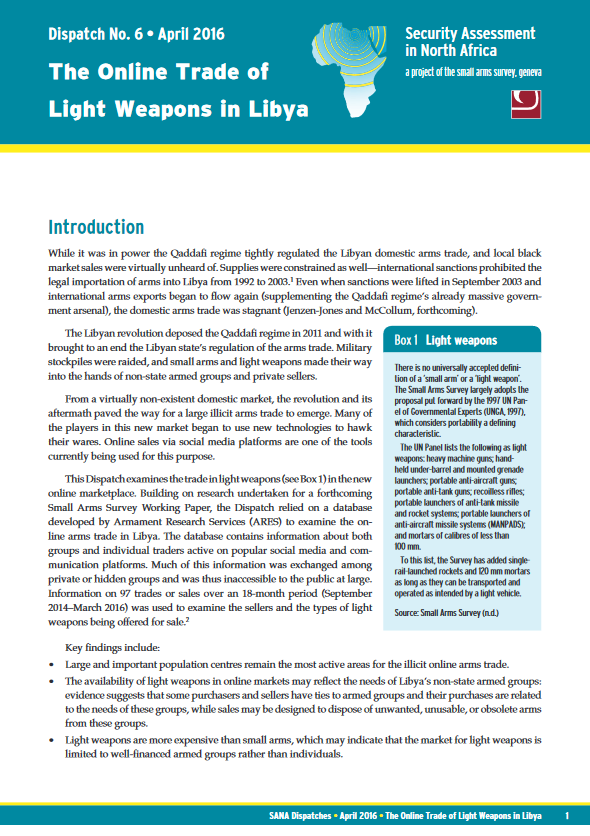
The Online Trade of Light Weapons in Libya (SANA Dispatch 6)
The Libyan revolution deposed the Qaddafi regime in 2011 and with it brought to an end the tight regulation of the arms trade. Military stockpiles were raided, and small arms and light weapons made their way into the hands of non-state armed groups and private sellers.
From a virtually non-existent domestic market, the revolution and its aftermath paved the way for a large illicit arms trade to emerge. Many of the players in this new market began to use new technologies to hawk their wares. Online sales via social media platforms are one of the tools currently being used for this purpose.
A new Dispatch from the Small Arms Survey’s Security Assessment in North Africa (SANA) project, ‘The Online Trade of Light Weapons in Libya’ (also available in ARABIC) examines the trade in light weapons in the new online marketplace. Building on research undertaken for a forthcoming Small Arms Survey Working Paper, the Dispatch relies on a database, developed by Armament Research Services (ARES), containing information about both groups and individual traders active on popular social media and communication platforms.
‘The Online Trade of Light Weapons in Libya’ explores the regional distribution of online sales and notes the availability of various types of weapons. The Dispatch undertakes a detailed examination of the light weapons offered for sale, including their specific types and designations, and their countries of origin. It concludes with a policy-relevant analysis of the current state of the Libyan online light weapons market and possible future developments.
Key findings include:
- Large and important population centres remain the most active areas for the illicit online arms trade.
- The availability of light weapons in online markets may reflect the needs of Libya’s non-state armed groups: evidence suggests that some purchasers and sellers have ties to armed groups and their purchases are related to the needs of these groups, while sales may be designed to dispose of unwanted, unusable, or obsolete arms from these groups.
- Light weapons are more expensive than small arms, which may indicate that the market for light weapons is limited to well-financed armed groups rather than individuals.
- The relative absence of certain light weapons (most notably mortars and crew-served recoilless guns) from online arms-trading platforms is noteworthy, given the substantial numbers of such weapons possessed by both the Qaddafi regime and rebel forces during the 2011 revolution.
- Most of the light weapons for sale originate from pre-1992 imports by the Qaddafi regime, although some systems were imported during the 2003-2011 period, and one possibly after 2011.
- The majority of light weapons for which the country of origin can be conclusively identified are from the former Warsaw Pact region, including the former Soviet Union and the Russian Federation.